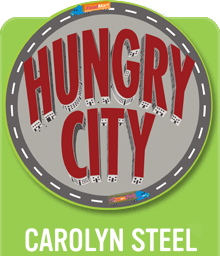Rio+20 and Nordic Food
Back in June 2012, I went to Rio+20 at the invitation of the Nordic Council of Ministers to host a debate on New Nordic Food and its potential to create healthier food cultures and sustainable rural economies. The event was inspired by my Danish chef friend Trine Hahnemann, and it sought parallels between Nordic and Brazilian food cultures: very different on the surface, yet driven by similar concerns: to live in harmony with nature and the seasons; to support biodiversity by finding foods from as many sources as possible; to strengthen traditional foods and methods of production, and to maintain a healthy balance between mankind’s needs and those of nature.
The debate highlighted the importance of understanding global food issues in a cultural context. Nordic nations are highly industrialised and the most equitable on earth; in Brazil, food is still linked to development issues and poverty. Then there is the food itself: while northern countries celebrate rye, fish and berries, Brazilian rainforests provide the greatest food diversity on earth; a diversity which is itself at risk from the globalised food economy of which Nordic countries are an inevitable part.
Trine Hahnemann, who also cooked a delicious Brasilo-Nordic feast later, put forward her case for sustainable eating: an 80:20 split between plants and animals, and a 60:40 ratio of locally produced to imported food.
Brazilian chef Teresa Corçao spoke about manioc, a hugely versatile traditional staple of North East Brazil, which has been neglected but is now making a comeback, partly due to her own ‘Instituto Maniva’, which seeks to rediscover and celebrate this most willing and satisfying of foods. For Teresa, ‘cooking is a political act’, and chefs have a powerful role to play, as they are replacing mothers as cooks to the people. Her ‘manioc house’ has a crazy network of people, she says, full of stories and emotion, many to do with poverty; but it is also a place where people can find a new, shared tool for social and environmental change. You can find out more about this sitopian project here: Instituto Maniva
Supplying a very different perspective was Palle Christiansen, Greenland’s Minister for Nordic Cooperation. While agreeing that local cuisines are inextricably bound up with identity, Christiansen pointed out that Greenland has only one harvest a year, and cannot manage a ’60-40′ split between locally produced and traded food; nor would it be feasible to attempt an 80-20 split of plant to animal-derived food, since for many Greenlanders, whale and seal meat were the mainstay of the diet. ‘We have the freshest prawns in the world’ said Christiansen, but went on to say that locally-caught Humpback Whale, a mainstay of the Innuit diet, was increasingly polluted. While recognising the emotional issues attached to the eating of whale-meat and the need to keep international debate going, Christiansen urged that it was important to remember, when speaking of sustainable diets, that any prescriptions must adapt to local conditions. Local doctors are recommending that the Innuit kept eating whale and seal for their nutritional value; as Christiansen put it: ‘our daily bread is meat’.
Renato Maluf, former president of the Brazilian National Council on Food Safety and Nutrition, agreed that biodiversity is about people, as well as food. In Brazil there is also a fear of poisoned food, he said, which is why there is increasing interest in an agro-ecological approach. Brazil is not exempt from the global trend in obesity, either; indeed it is as important as hunger as an issue in the country. Maluf emphasised the importance of government intervention, saying government food procurement in Brazil had helped pay a higher price to farmers who promoted biodiversity.
For more on the debate, see here:










